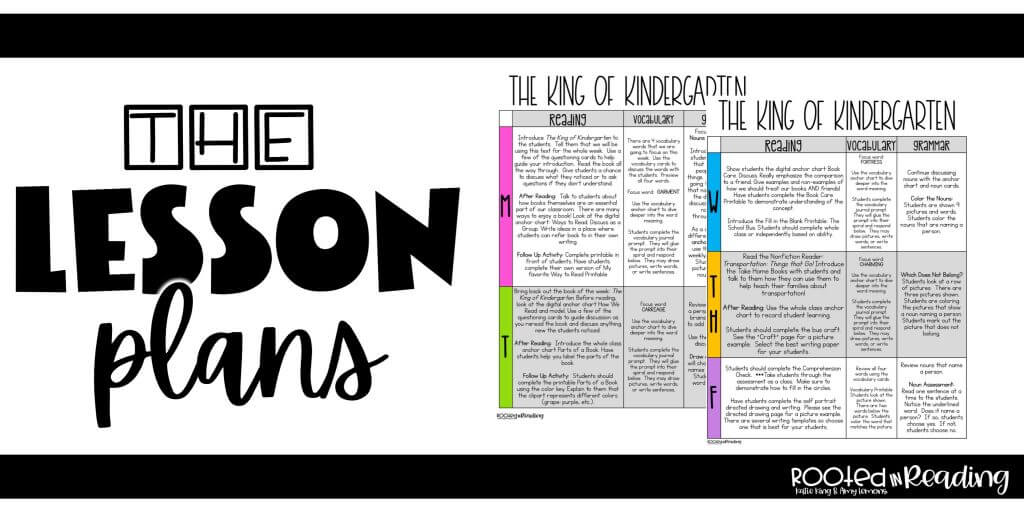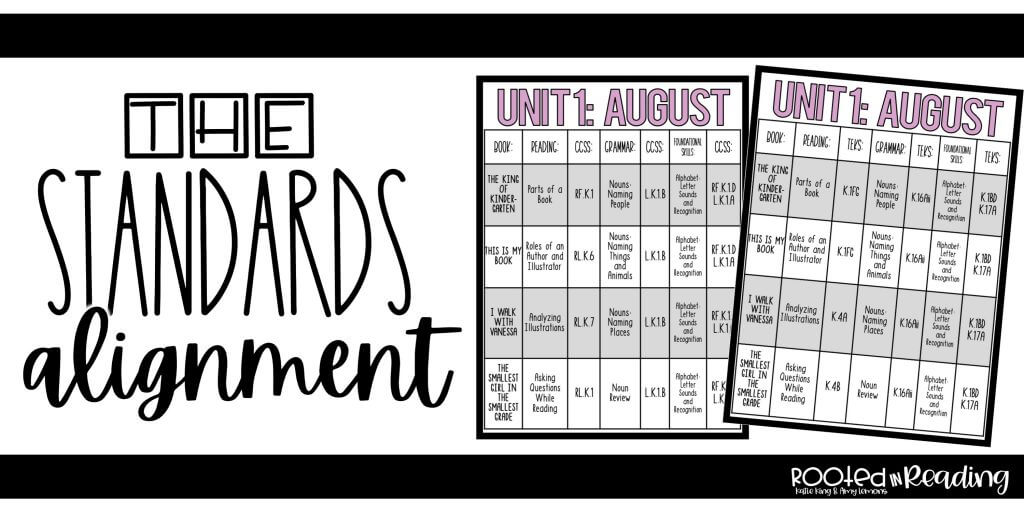What is Rooted in Reading?

Rooted in Reading is a reading curriculum that was created to enhance the Language Arts instruction in Kindergarten, 1st, 2nd, and 3rd grade classrooms. Teachers read purposefully-selected picture books to their students each week. Students are actively engaged in listening to and discussing each text throughout the read-aloud. Before, during, and after the read-aloud, teachers guide book conversations through thought provoking discussion questions. With Rooted in Reading, the learning process continues through targeting specific skills and standards as students interact with this text all week. Activities for each text have been designed to assure students are actively thinking, making connections, and responding to the text in a meaningful way. This reading curriculum focuses on deepening comprehension, developing and expanding vocabulary, and integrating language skills with the use of a mentor text.
We are going to take a look at our Kindergarten Reading Curriculum and Kindergarten Lesson Plans so that you can see what it's all about! Keep in mind that this showcases ONE book and ONE week of learning. Each monthly teaching resource includes FOUR books and FOUR weeks of learning!
The Mentor Text

All of our Kindergarten reading lesson plans, as well as the other grade levels, focus around a mentor text for the week. You might be thinking... what are the benefits of using picture books all throughout my Kinder reading curriculum? Well, I'll give you 10 reasons to fit this into your reading lesson plans!
- Students make deep and meaningful connections to the books.
- Students experience growth in their background knowledge.
- Students’ interest in reading increases.
- Using a read-aloud allows an opportunity for students to reflect.
- Picture books provide a safe space for classroom discussions.
- Interactive read-alouds enhance and enrich the classroom community.
- It allows teachers to model effective reading strategies in a controlled area.
- Picture books provide a non-threatening environment where reluctant and skilled readers can flourish.
- .Reading aloud a picture book builds a bridge between language and reading. The read-aloud shows students how language works in context.
- Incorporating read-alouds in the classroom exposes students to multiple genres that they may not gravitate towards on their own.
The Standards Alignment
Like each of the grade levels, Our Kindergarten Rooted in Reading curriculum focuses on one or more comprehension standards each week. The standards structure for each unit are outlined in an easy to understand overview for the entire Rooted in Reading curriculum. We also spiral comprehension skills throughout the year so that students have ample exposure and practice. Rooted in Reading does not teach the skills in isolation. The read-aloud serves as a mentor text throughout the week where the students are analyzing the text, making connections, and digging deeper with comprehension by participating in intentional conversations pertaining to the read-aloud.
The Lesson Plans
Teachers are provided with a set of lesson plans , like the Kindergarten reading lesson plans pictured above, that include activities and resources for comprehension, vocabulary, and grammar. All of the components are focused around one main read-aloud that is introduced at the beginning of the week, reread throughout the week, and referred to during all of the lessons.
The Comprehension Focus

Each week the lesson plans will guide the teacher on how to introduce, model, and teach the main comprehension focus. For this particular book, students will learn all about books. They will learn different ways to read, how we read, and about caring for books. Every book and set of lesson plans has its own comprehension focus.
The Student Activities
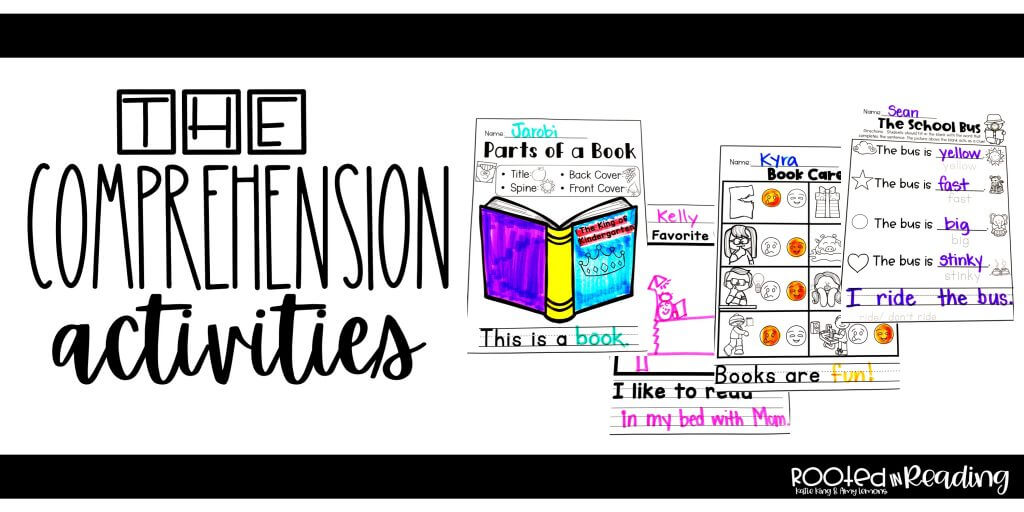
Students practice those reading skills each week throughout the use of different graphic organizers, response sheets, flap-books, etc. Students use these activities to expand their critical thinking skills as they are digging deep into the text.
The Interactive Lessons
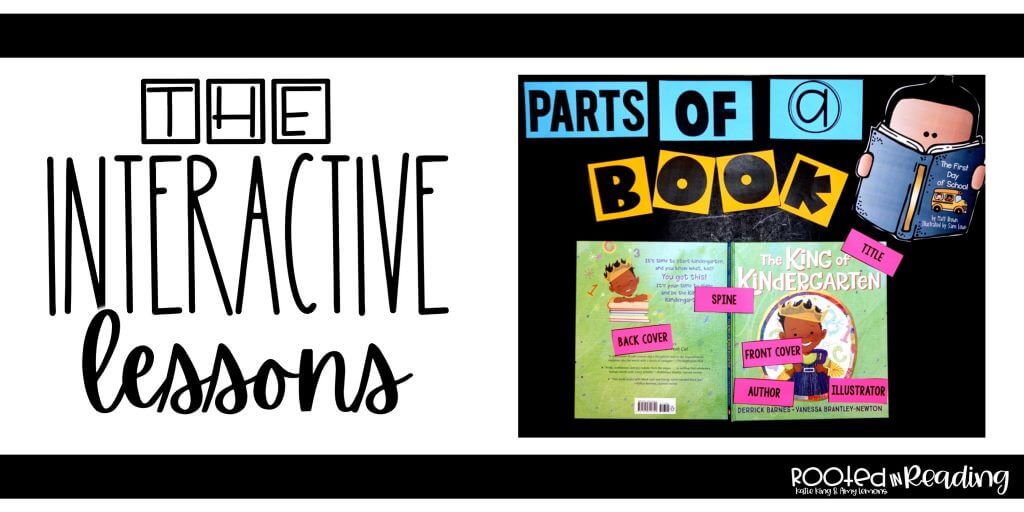
We don't stop at lesson plans and suggestions, we also implement interactive lessons and discussions in our reading curriculum. Here you can see that Kindergarten students will learn all about the parts of a book. As a class, they will label the parts of a book together. The teacher facilitates the discussion, but the students are actively engaged in the conversation. By getting the students actively engaged in the discussion, teachers can work through any questions and help students to identify key comprehension components.
The Comprehension Assessment

Students are assessed each week on the mentor text and skills. In our Kindergarten reading curriculum, students are tested on their comprehension of the read-aloud AND on their knowledge of the focus skill. Here you can see that we have kept the assessment developmentally appropriate for kindergarten. This allows teachers to immediately know if their students are mastering the comprehension standards or if reteaching is necessary.
The Nonfiction Reader

One unique thing about our reading curriculum is that each week we pair a nonfiction text with the mentor text. These nonfiction readers can be found right within the weekly lesson plans and are written on a level that students can understand. For example, In our Kindergarten reading curriculum you can see the Kindergarten readers are learning about the school community. They learn important facts and details about the school community which helps them to better understand the different character roles seen in the main story for the week. By incorporating the nonfiction readers into the reading lesson plans, we provide teachers with an opportunity to use contextual information for summarizing and reiterating key skills from the mentor text.
The Nonfiction Connection

We understand the value of interactive lessons, not only for the main read aloud, but also for the nonfiction connection. Each week students participate in an interactive lesson anchored by an informational chart. This anchor chart is created WITH the students as they are brainstorming information that they acquired through the nonfiction reader.
The Nonfiction Response
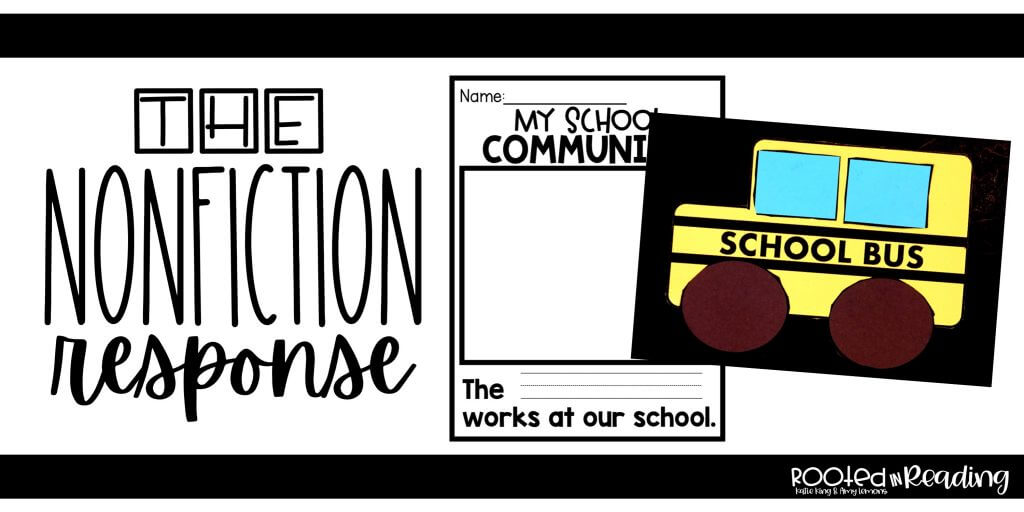
Now that students have participated in a nonfiction read-aloud, classroom discussion, and interactive lesson, they can demonstrate their understanding of the material with the nonfiction response. This allows students to show what they have learned in a kindergarten-friendly format. Here students create a school bus and write about one of the school workers.
The Vocabulary Study
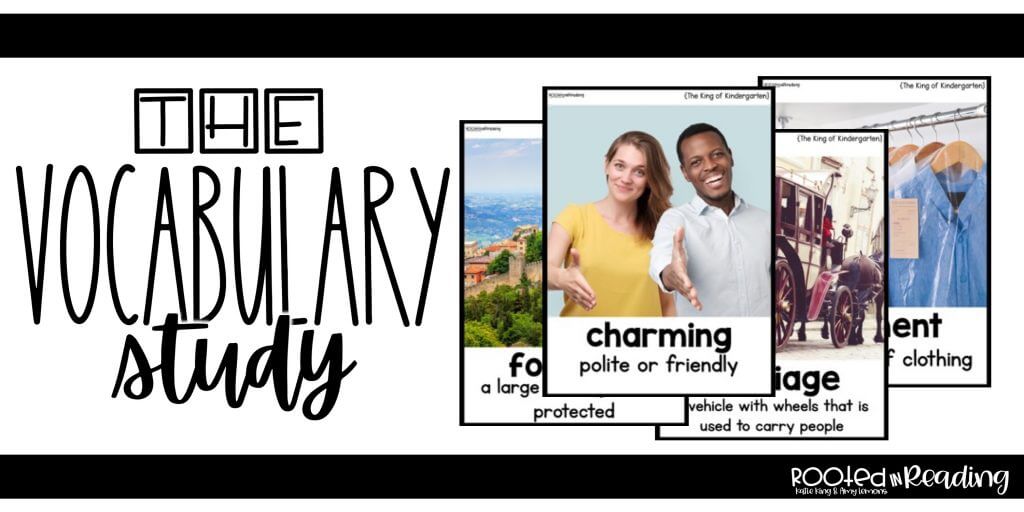
Integrating vocabulary into reading lessons is crucial. Did you know that students cannot possibly comprehend a story if they do not understand the vocabulary within the text? We want students to understand and enjoy what they are reading, so we help to develop a deep understanding of words.
The Vocabulary Practice
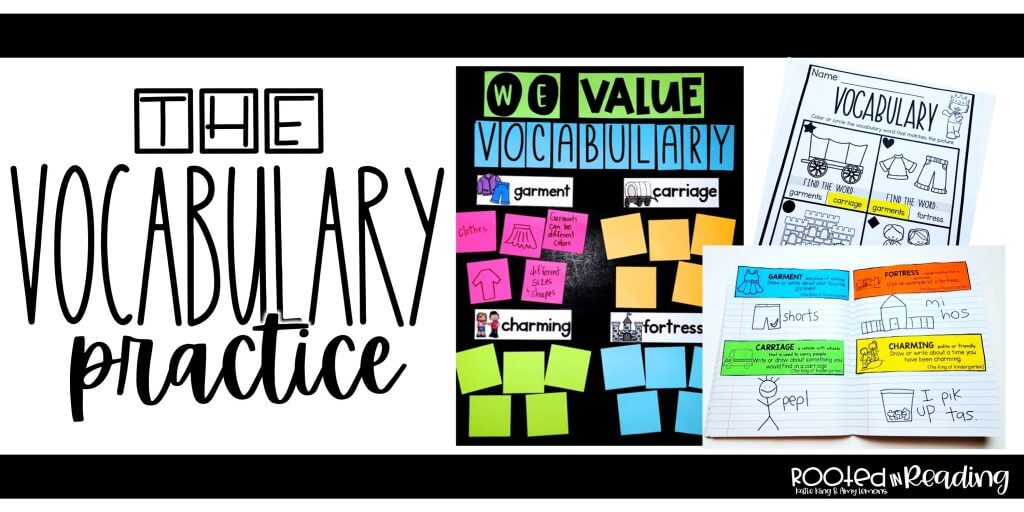
Our Kindergarten reading lesson plans guide the teacher with words to focus on, activities to practice the meaning of those words, and assessments that show students' understanding of the words introduced.
The Reading Response

We believe that when we teach ELA skills through skill and drill, it is almost impossible to pull in all the previous knowledge in an engaging and timely manner. Picture books allow us to accomplish what we need to in our instruction while allowing students to enjoy the process. In our lesson plans each week students are given the opportunity to respond to the text. They may complete a directed drawing or writing craft that is always paired with a written response.
The Grammar Focus
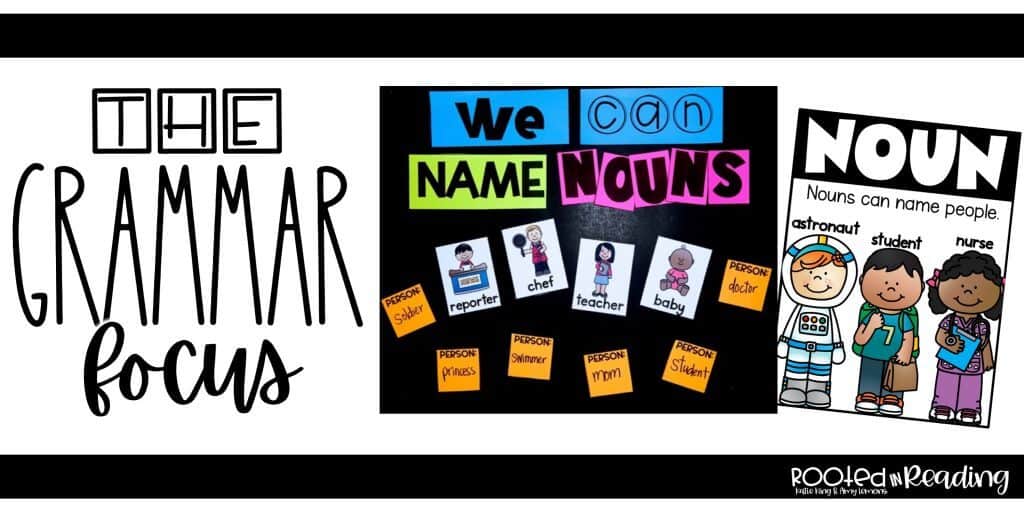
We know how hard it is to fit grammar into your lesson plans each week. That's why we always include grammar in our reading curriculum.
The Grammar Activities
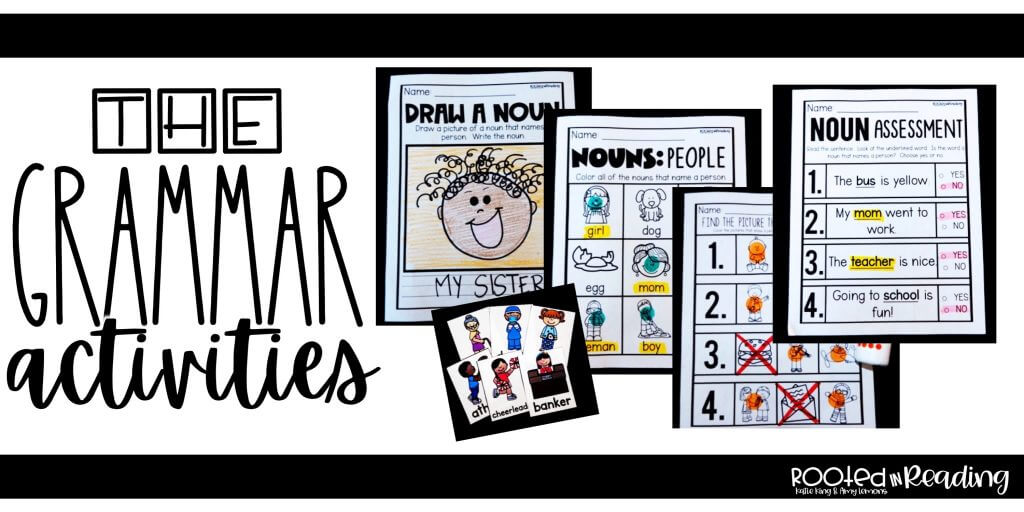
Students participate in daily activities to deepen their understanding of the grammar skill. This allows students to truly grasp words, sentences, and language.
The Mentor Sentence

Included in our Kindergarten Rooted in Reading Curriculum is The Daily Deep Dive. Our lesson plans focus on one sentence from the mentor text each week. Throughout the week, students are engaged with that sentence in what we call the daily deep dive. They are locating the parts of speech, identifying vocabulary words, thinking about the meaning of the words, and more. The mentor sentence allows students to put everything together with just one sentence: comprehension, grammar, and vocabulary.
The Foundational Skills
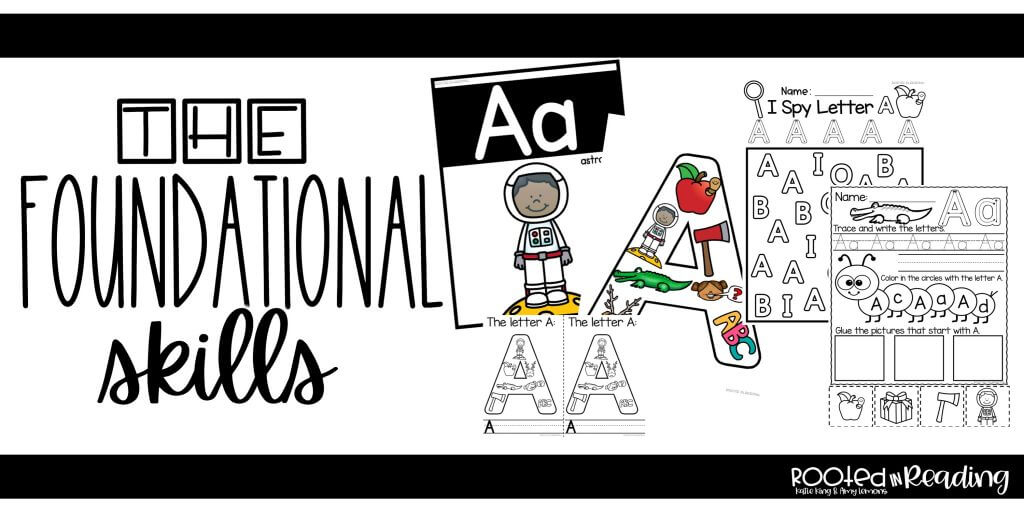
We understand how important foundational skills are in early literacy. Rooted in Reading Kindergarten incorporates phonics activities and printables that enhance the understanding of those foundational skills.
All the Information

Kindergarten Rooted in Reading will be released for the 2020-2021 school year. We have currently released our August teaching resource as well as a Growing Bundle. You can see the release dates for the other months listed on the image above. Here are some helpful links:

